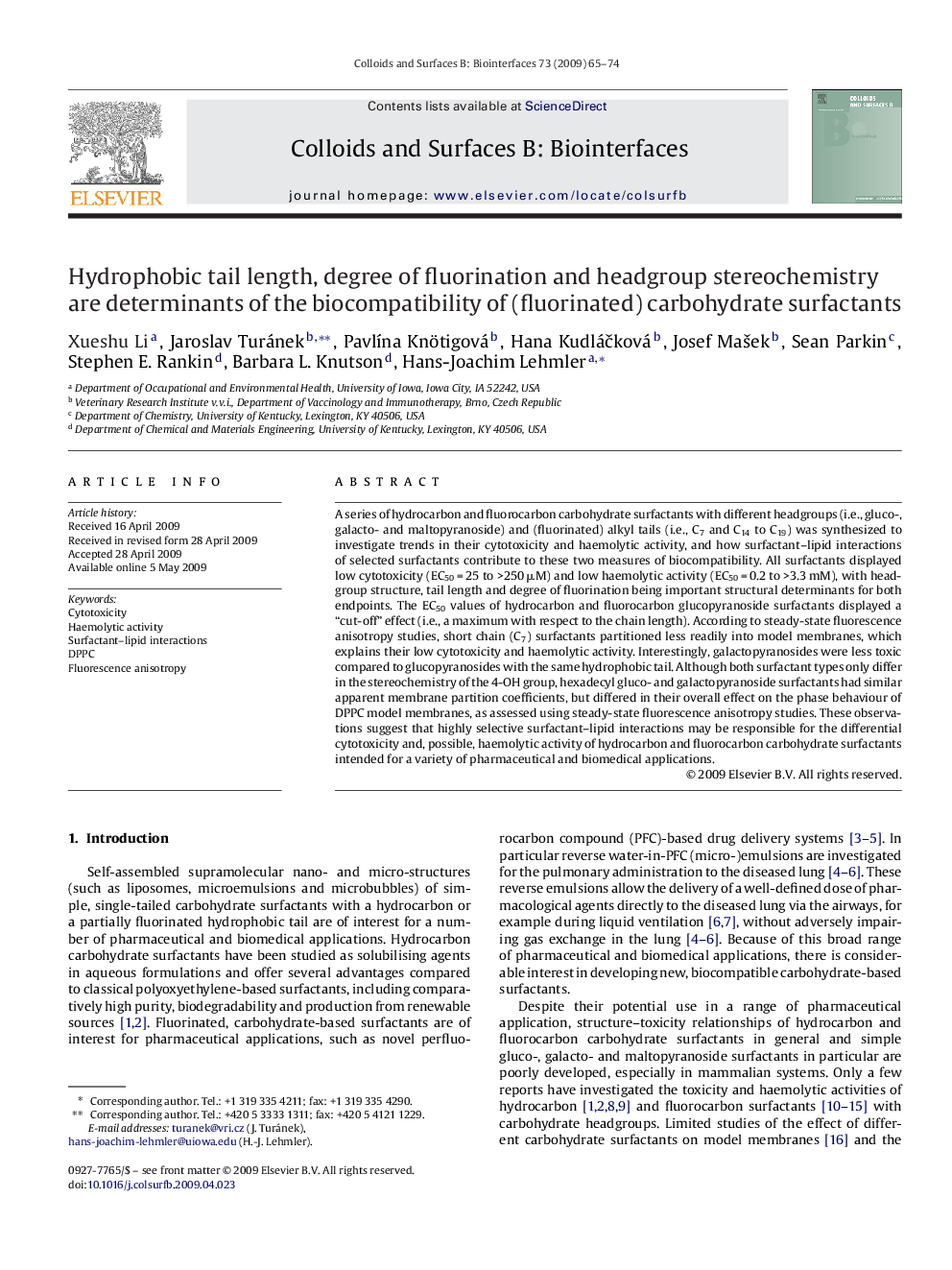| Article ID | Journal | Published Year | Pages | File Type |
|---|---|---|---|---|
| 601637 | Colloids and Surfaces B: Biointerfaces | 2009 | 10 Pages |
A series of hydrocarbon and fluorocarbon carbohydrate surfactants with different headgroups (i.e., gluco-, galacto- and maltopyranoside) and (fluorinated) alkyl tails (i.e., C7 and C14 to C19) was synthesized to investigate trends in their cytotoxicity and haemolytic activity, and how surfactant–lipid interactions of selected surfactants contribute to these two measures of biocompatibility. All surfactants displayed low cytotoxicity (EC50 = 25 to >250 μM) and low haemolytic activity (EC50 = 0.2 to >3.3 mM), with headgroup structure, tail length and degree of fluorination being important structural determinants for both endpoints. The EC50 values of hydrocarbon and fluorocarbon glucopyranoside surfactants displayed a “cut-off” effect (i.e., a maximum with respect to the chain length). According to steady-state fluorescence anisotropy studies, short chain (C7) surfactants partitioned less readily into model membranes, which explains their low cytotoxicity and haemolytic activity. Interestingly, galactopyranosides were less toxic compared to glucopyranosides with the same hydrophobic tail. Although both surfactant types only differ in the stereochemistry of the 4-OH group, hexadecyl gluco- and galactopyranoside surfactants had similar apparent membrane partition coefficients, but differed in their overall effect on the phase behaviour of DPPC model membranes, as assessed using steady-state fluorescence anisotropy studies. These observations suggest that highly selective surfactant–lipid interactions may be responsible for the differential cytotoxicity and, possible, haemolytic activity of hydrocarbon and fluorocarbon carbohydrate surfactants intended for a variety of pharmaceutical and biomedical applications.
